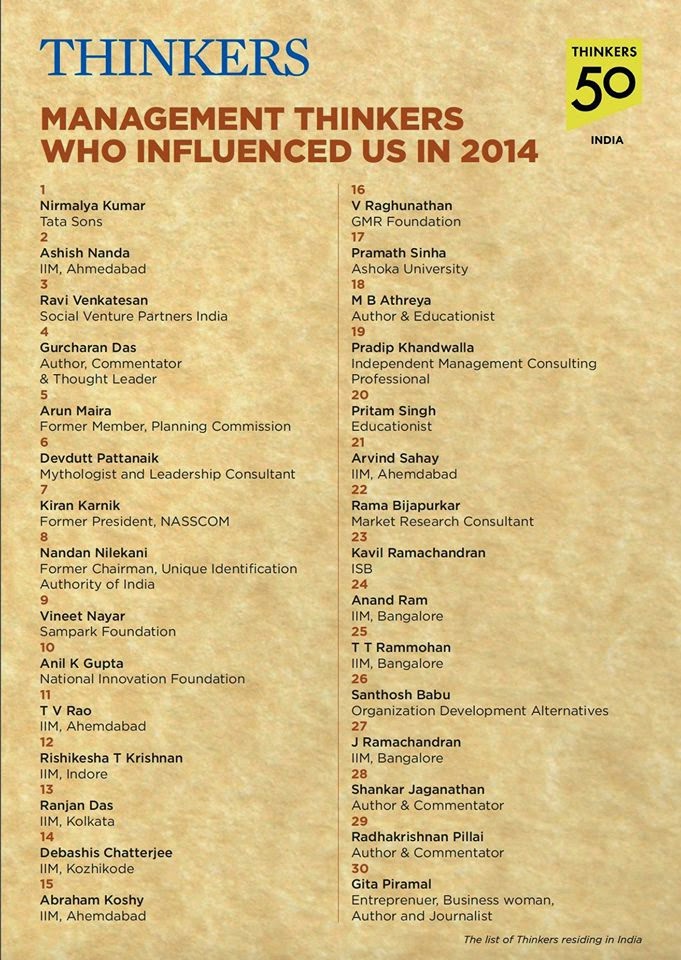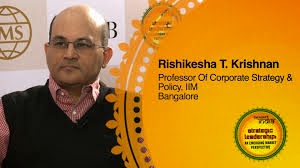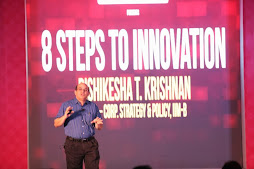The Stanford India Biodesign Program (SIBP) http://biodesign.stanford.edu/bdn/india/ organised a one-day Medtech Conference at Delhi on December 5, 2011. The conference performed two tasks – it underlined the challenges in developing appropriate medical technologies for the huge health challenges faced in India, and gave an update on what the SIBP has achieved so far in addressing these challenges.
I thought the conference did a great job on both fronts.
What’s the problem SIBP is trying to solve?
In his presentation, SIBP director, Dr Balaram Bhargava of AIIMS drew attention to the huge health inequity we see in India. Expenditures on healthcare put a heavy burden on poor patients. While most countries in the developed world have either a strong public health infrastructure or an insurance-based system for reimbursements, in India 78 per cent of health expenditure is from the patient’s pocket. One third of patients borrow money to pay medical bills. Public expenditure on health is low by any standard.
Dr. Bhargava pointed out that poor quality, high cost devices are a burden on the healthcare system. 80 per cent of devices are imported, and alien to users. Training people to use them correctly is a difficult task. Designing the right devices is a great opportunity. India has highly qualified people, a genetically endowed intuitive sense, and the business and clinical expertise required to commercialise these devices. India can be a laboratory to develop and test innovations for large local markets. New programs like NRHM, RSBY, state level insurance, health sector innovation council, and universal health coverage are proposed that promise to change the health landscape in India. Dr. Rajiv Doshi mentioned that other positive signs are that a medtech regulatory system is being created, and that 65 per cent of Indian manufacturers are focused on low end devices.
Other speakers referred to a projected 15 – 20% growth for the Indian medical equipment market. India is slated to be the cardio vascular and diabetic capital of the world. With all these burgeoning health needs, Astra Zeneca expects India and China to become the top global innovation centres by 2020.
Other speakers mentioned the importance of lower complexity of new medical devices to break through skill level barriers, reduce costs and facilitate volume expansion. Another important trend is to move towards devices that can be used by the consumer or at home rather than in a formal hospital setting. Adoption of new medical devices can be a problem though - hospitals don't want innovation, but just ask for reduction in the cost of existing products. Where purchase through tender by the government is involved, the process of changing specifications to help the purchase of low-cost medical equipment is challenging.
Speakers also mentioned the lack of adequate investment outside the area of ICT. The challenge is to step up R&D: Indian device manufacturers spend only 1% of their sales on R&D compared to 11% in the US!
What is SIBP?
SIBP is a novel initiative of Stanford University, working with the All India Institute of Medical Sciences (AIIMS) and IIT Delhi with support from the Indian government’s Department of Biotechnology (DBT) to create the a biodesign ecosystem in India. Every year, SIBP chooses 4-5 SIBP fellows – typically doctors and engineers – who form teams to work on the design of new medical devices appropriate for India. These fellows get trained in the design methodology at Stanford, and then put it into practice working at the SIBP lab at AIIMS in New Delhi. SIBP fellows are expected to take their product innovations all the way to the market.
Another director of the program, Stanford-based Dr Rajiv Doshi mentioned that the SIBP was started within 4 months of the first workshop in 2007. The objective is to go beyond well known and much touted examples of innovation such as the Jaipur foot and Aravind eye care. India has the potential to be a hub of low-cost medical devices.
Why is SIBP important?
In my perspective, the main strengths of SIBP are: (1) the observation-based needs identification approach; (2) the user-centric approach to device design; (3) the creation of cross-disciplinary teams; (4) the seeding of an innovation capability for tomorrow – whether these devices or enterprises work or not, I am sure the SIBP fellows will play a significant role in innovation in India over the long run.
What has SIBP learnt so far?
Dr. Doshi argued that the Biodesign process developed in the US is relevant to India, particularly the elaborate needs identification process. But there are differences too such as different criteria in needs filtering, and how intellectual property is treated. He summarised some of the lessons learnt so far: (1) identify needs through direct clinical observations; (2) do not assume that the Indian market is like western markets; (3) devices need to be Inexpensive, with a low upfront cost; (4) Devices are better off if they are manufactured locally and use simple materials; (5) but they need to be more rugged because of the tougher local environment.
Dr. Joshi mentioned that the support of the government has been very helpful. Some of the things that have taken time are creation of infrastructure, clinical access, and the drawing up technology transfer guidelines. “Training the trainer” programs will help scale up. A new center at IIT Madras promises to expand the SIBP beyond AIIMS and IIT Delhi.
What has SIBP achieved?
17 SIBP fellows have filed about 20 patent applications so far. Some of the SIBP highlights:
I resonated with the call given by Youseph Yazdi of the Center for Bioengineering Innovation and Design (CBID) at Johns Hopkins to focus on "Innovative partnerships" rather than "technology transfer." Given India’s poor record in technology transfer, I really think that innovative partnerships are the way to go.
What’s the potential of lowcost medical innovation? The sky’s the limit if you go by the powerful example of the Day of Birth Alliance in Africa. This alliance of Jhpiego’s Innovation Development Program, CBID and the non-profit arm of Laerdal Medical is pushing the boundaries in a critical public health area. Cervical cancer screening through the pap smear test can't be replicated easily in the developing world because it involves multiple visits and is expensive. Instead the Day of Birth Alliance has developed a single visit approach for screening cervical cancer through direct visualisation of pre cencerous lesions using cooking vinegar. A cryoblation equipment that requires USD 2000 and industrial grade gases has been replaced by a USD 75 cryoblation gun that can be used with non medical grade CO2!
- Avijit, a SIBP fellow and his colleagues used the SIBP mantra of “Identify, invent, implement” to come up with 600 device needs. They finally narrowed down their efforts to the important problem of neonatal resuscitation. Birth asphyxia results in 210,000 deaths/year in India. Existing methods to combat this asphyxia such as bag mask ventilation exist but requires skills that the average healthworker often lacks. A low cost, easy-to-use alternative is the goal and "Neobreathe" is the product Avijit and his colleagues are working on to solve this problem.
- Nitin Sisodia, another SIBP fellow and colleagues are focusing on identifying early hearing defects. They have developed “Sohum”, a novel hearing screening device. This device based on brainstem evoked response audiometry and advanced signal processing eliminates the need for sedation and reduces the need for skill.
- Pulin, a 2009 SIBP fellow and his colleagues are working on a limb immobilisation device. Many accident victims are mishandled in the critical time soon after their accident leading to complications and loss of limbs. Existing protocols require that the patient is immobilized because the exact nature of the injury is rarely known immediately after an accident. But existing products are not effective. Pulin and his colleagues are developing Relligo, a low-cost, easy-to-use solution for this problem.















Great article, Rishi. Thanks for sharing this information and your perspective. What is an "innovative partnership"? Some explanation using an example would help. Thanks.
ReplyDeleteThanks Prof. I learnt a lot on the problems and opportunities in the medical equipment proffession , and the systematic approach SIBP ( trained by stanford ) is taking to find an innovative solution. Thanks again , I enjoyed reading this blog
ReplyDelete